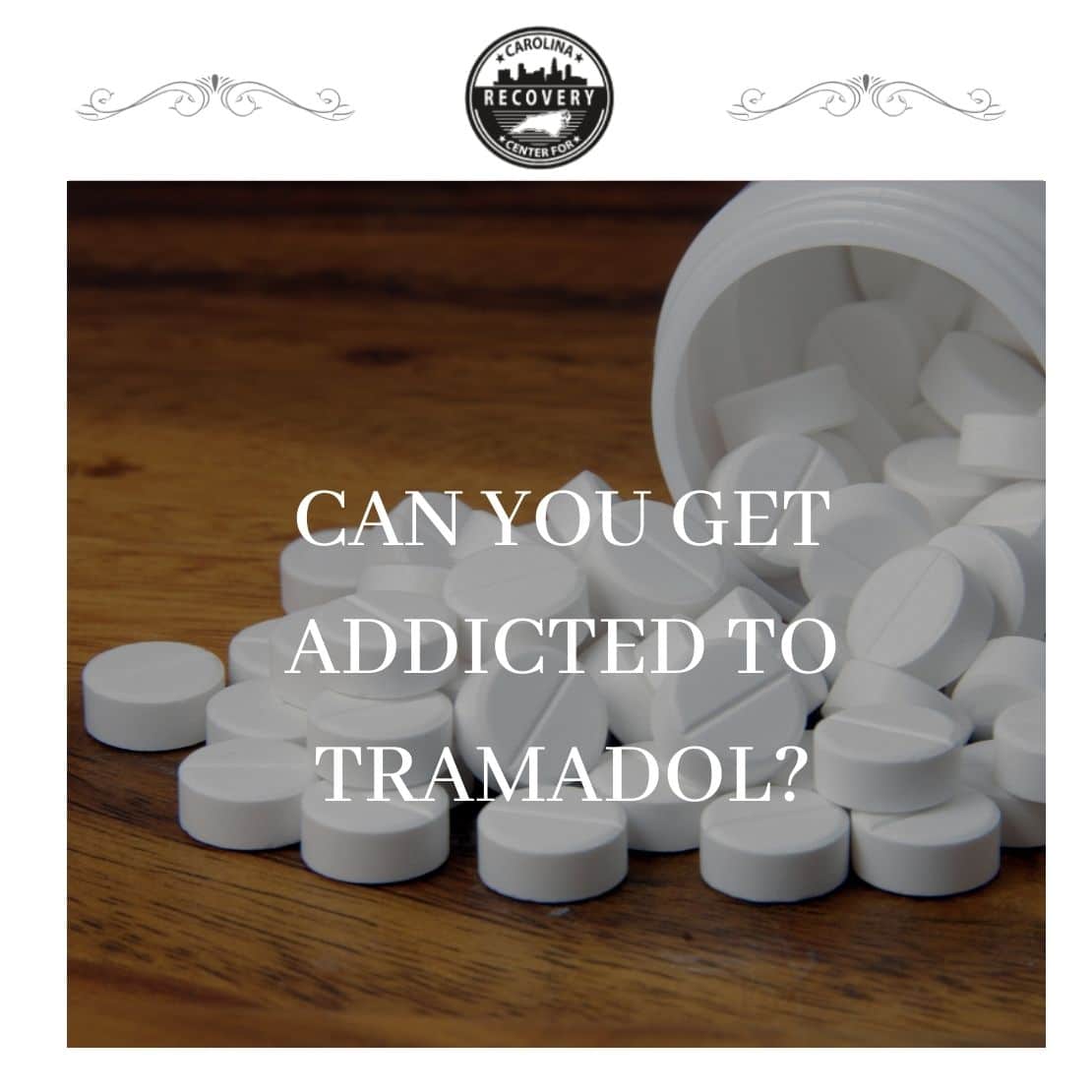Can You Get Addicted to Tramadol?

Medically Verified: 2/1/24
Medical Reviewer
Chief Editor

All of the information on this page has been reviewed and verified by a certified addiction professional.
Tramadol is a synthetic opioid that is used medicinally to relieve pain. While it is considered less addictive than more potent opioids like oxycodone, it is possible to develop a dependency on it, so tramadol is not intended for long-term use.
While some doctors may believe that tramadol is less dangerous than other opioids, you can become addicted to it. The belief that tramadol is not addictive is harmful and it puts patients at risk of developing physical and psychological dependence. Despite tramadol’s relatively low opioid content, people still abuse it to experience a euphoric and drowsy high.
According to the National Institutes of Health (NIH), “An estimated 1.6 to 1.8 million Americans reported any (alone or in combination) past-year misuse of oral tramadol.”[1]
What is Tramadol?
Tramadol is a medication used to relieve moderate to moderately severe pain. It belongs to a class of drugs known as opioid analgesics. While tramadol is considered an opioid, it has some unique properties compared to other more potent opioids like morphine or oxycodone.
Tramadol works by binding to opioid receptors in the brain, similar to other opioids, but it also has an additional mechanism of action. It inhibits the reuptake of certain neurotransmitters, such as serotonin and norepinephrine. This dual action can provide not only pain relief but also some mild antidepressant effects, which can be beneficial for individuals with both pain and mood-related issues.
Tramadol is available in various forms, including immediate-release tablets, extended-release tablets, and capsules. It is typically prescribed by healthcare professionals for conditions like chronic pain, post-surgical pain, and pain associated with injuries. Tramadol may be sold under the brand names Ultram or Conzip.
Why Do People Abuse Tramadol?
Tramadol is considered an opioid narcotic just like other drugs such as codeine, hydrocodone, morphine, and oxycodone, so it can cause similar effects. However, tramadol has a lower opioid content than substances like morphine or oxycodone and the high people experience from abusing it is less potent. As a result, many people either take large amounts of tramadol at once or mix it with other drugs.
Due to the likelihood of taking large doses of tramadol or combining it with other drugs, abusing it can be incredibly dangerous. If you or a loved one misuses tramadol, you must seek professional drug rehab as soon as possible.
What are the Effects of Tramadol?
Tramadol is used to treat mild to moderate symptoms of pain and is usually prescribed instead of more potent opioids. Tramadol should always be used with caution.
The effects of tramadol may include:[2]
- Nausea and vomiting
- Slowed breathing or heart rate
- Confusion
- Inability to concentrate or focus
- Feelings of depression or anxiety
- Lowered inhibitions and increased risk-taking behaviors
- Sleepiness or drowsiness
- Euphoria
If you use tramadol consistently over some time, you might develop a dependency or an addiction. As a result, it is important to be aware of the signs of tramadol addiction.
Symptoms and Warning Signs of Tramadol Addiction
If you are addicted to tramadol, it might be difficult to notice the signs of dependency in yourself because substance use disorders affect your central nervous system in a manner that leads to denial and downplaying of your need for the drug.
If you experience the following symptoms, you might be addicted to tramadol:
- Taking the substance for longer or in larger doses than intended
- Being unable to stop or cut down on the use of tramadol
- Spending a lot of time obtaining, using, or thinking about tramadol
- Experiencing cravings or strong urges to abuse tramadol
- Being unable to complete obligations or responsibilities at work, school, or home
- Continuing to use tramadol despite facing physical or mental health issues
- Taking large doses of tramadol or mixing it with other substances like alcohol
- Losing interest in previously enjoyed activities to abuse tramadol
- Using tramadol in dangerous situations, such as while driving a car
- Needing more tramadol to experience the desired effect (developing a tolerance)
- Experiencing symptoms of withdrawal when you cannot abuse tramadol
If you or a loved one are addicted to tramadol, it’s time to seek professional help. Using tramadol in large doses or in combination with other substances can lead to a life-threatening overdose.
Recognizing the Symptoms of Tramadol Withdrawal
The easiest way to tell that you are addicted to tramadol is to determine whether you experience withdrawal symptoms when you are not using it. When you are addicted to any drug, your brain and body begin to rely on the substance to function properly, and sudden removal of it is what causes you to experience withdrawal symptoms.
The symptoms of tramadol withdrawal include:
- Anxiety and restlessness
- Shaking or tremors
- Insomnia
- Depression and suicidal thoughts
- Shivering
- Agitation or aggressive behavior
- Flu-like symptoms
- Tingling sensations
- Strong cravings to abuse tramadol
You should never attempt to detox from tramadol at home, as this could lead to dangerous symptoms. Instead, seek help from an addiction treatment program that offers medical detox and treatment services.
Find Help for Tramadol Abuse and Addiction
If you or a loved one suffers from tramadol addiction, it’s time to seek help. Dealing with a substance use disorder on your own can be incredibly difficult, but at Carolina Center for Recovery, our master-level, experienced therapists will be facilitating therapeutic processes and psycho-educational groups, helping to create treatment plans and offering individual sessions to address your particular needs.
To learn more about our opioid addiction treatment programs, contact us today.
References:
- The National Institutes of Health (NIH): Misuse of Tramadol in the United States: An Analysis of the National Survey of Drug Use and Health 2002-2017, Retrieved September 2023 From https://www.ncbi.nlm.nih.gov/pmc/articles/PMC7271275/
- Medline Plus: Tramadol, Retrieved September 2023 From https://medlineplus.gov/druginfo/meds/a695011.html

